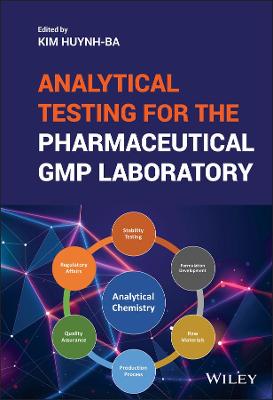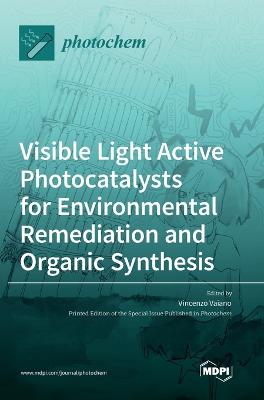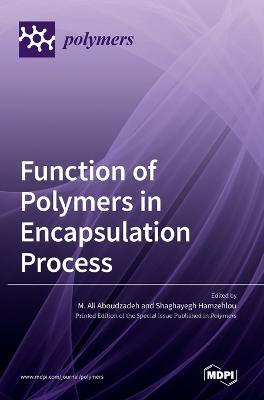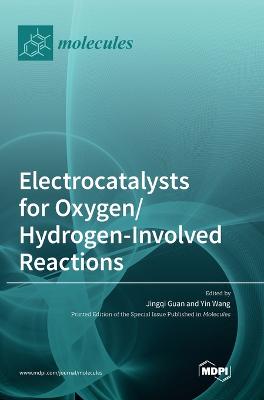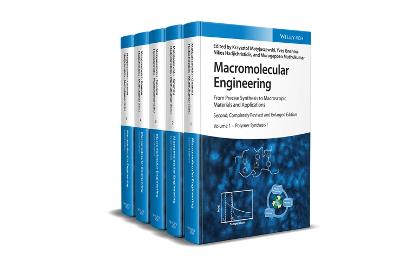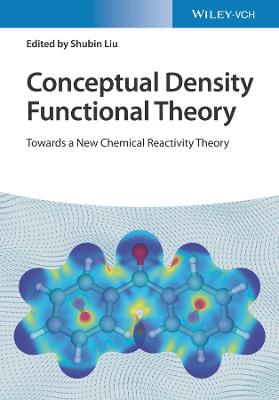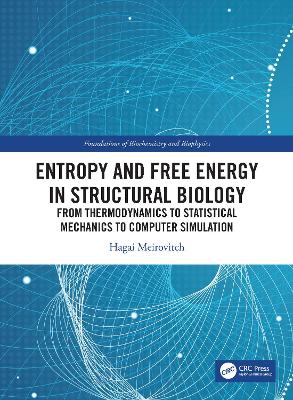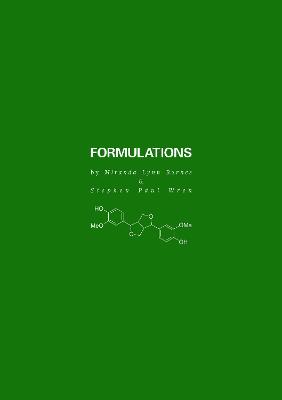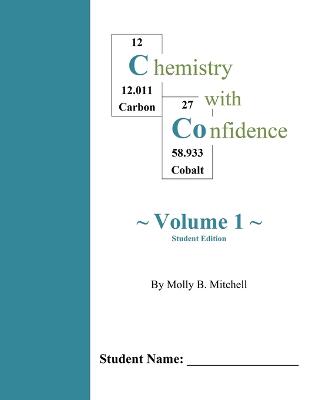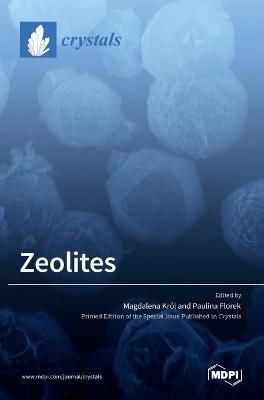Sustainable Uses of Byproducts from Silk Processing
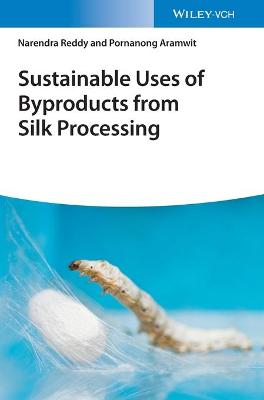 portes grátis
portes grátis
Sustainable Uses of Byproducts from Silk Processing
Aramwit, Pornanong; Reddy, Narendra
Wiley-VCH Verlag GmbH
05/2021
256
Dura
Inglês
9783527347865
15 a 20 dias
670
1 Sericin: Structure and Properties 1
1.1 Type of Silk Sericin 1
1.2 Localization of Silk Sericin 1
1.3 Molecular Mass of Sericin 2
1.3.1 Middle Silk Gland Sericin 2
1.3.2 Mulberry Cocoon sericin 2
1.3.3 Non-mulberry Cocoon and Peduncle Sericin 5
1.4 Layers of Sericin 6
1.5 Sericin Amino Acid Components 6
1.5.1 Silk Gland of Mulberry Sericin 6
1.5.2 Sericin from Mulberry Cocoons 8
1.5.3 Sericin from Non-mulberry Cocoons 12
1.6 Sericin Gene 14
1.7 Sericin Structure 16
1.8 Sericin Properties 19
1.8.1 Biophysical Properties 19
1.8.1.1 Water Solubility 19
1.8.1.2 Gelation 20
1.8.1.3 Thermal Stability 20
1.8.1.4 Ultraviolet (UV) protection 21
1.8.1.5 Adhesion Properties and Electrostatic Interaction 22
1.8.2 Biochemical Activity 22
1.8.2.1 Anti-tyrosinase Activity 22
1.8.2.2 Anti-elastase Activity 23
1.8.2.3 Antioxidant Activity 23
1.8.2.4 Anti-lipid Peroxidation Activity 25
1.8.3 Biological Activity 25
1.8.3.1 Anti-inflammatory Activity 25
1.8.3.2 Anti-tumor Activity 27
1.8.3.3 Inducing Collagen Production 28
1.8.3.4 Antibacterial Activity 29
References 32
2 Processing Sericin 39
2.1 Effects of Source and Extraction Method of Sericin on Its Benefits and Applications 39
2.1.1 Sericin Extraction 39
2.1.1.1 Water Extraction (WaterSS; HeatSS, AutoclaveSS) 39
2.1.1.2 Acid Extraction (AcidSS) 39
2.1.1.3 Alkali Extraction (AllkaliSS; Alkali-L-SS, Alkali-H-SS) 40
2.1.1.4 Urea Extraction (UreaSS) 40
2.1.1.5 Alcohol Extraction (AlcoholSS) 40
2.1.2 Effect of Source and Extraction on Sericin Properties 40
2.1.2.1 Molecular Weight of Sericin 40
2.1.2.2 Secondary Structure of the Sericin Protein 40
2.1.2.3 Phenolic contents 43
2.1.2.4 Antioxidant Activity 43
2.1.2.5 Anti-tyrosinase Activity 44
2.1.2.6 Cytotoxicity 44
2.1.2.7 Cell Attachment, Cell Proliferation, and Collagen Production 44
2.1.2.8 Cell Protection 44
2.1.3 Benefit and Application of Extracted Mulberry Sericin and Non-mulberry Sericin 45
2.1.3.1 Pharmaceutics and Cosmetics 45
2.1.3.2 Wound Healing 45
2.1.3.3 Tissue Engineering 47
2.1.3.4 Drug Delivery 47
2.2 Modification of Sericin Structure 48
2.3 Chemical Modification 48
2.4 Glutaraldehyde Cross-linking 50
2.5 Dehydrothermal (DHT) Cross-linking 51
2.6 Carbodiimide Cross-linking 51
2.7 Dimethylolurea (DMU) Cross-linking 53
2.8 Enzymatic Cross-linking 53
2.9 Physical Modification 54
2.9.1 Photo-Cross-linking 54
2.10 Forms of Sericin Processing 55
2.10.1 Two-dimensional Structure of Sericin 55
2.10.1.1 Hydrogel 55
2.10.1.2 Film 56
2.10.2 Three-dimensional Structure of Sericin 56
2.10.2.1 Electrospinning Silk Sericin and Its Blends 56
2.10.3 Pure Sericin Electrospun Fibers 57
2.10.4 Sericin Blends with Natural Polymers 59
2.10.5 Sericin Blends with Synthetic Polymers 60
2.10.6 Blends with Poly(caprolactone) 65
2.11 Sericin from Wild Silks 66
2.12 Fibroin-Sericin Blends 69
2.12.1 Freeze-drying 71
2.12.2 Salt Leaching 71
2.12.3 Gas Foaming 73
2.13 Biomaterials from Sericin and Sericin-Protein Blends 74
2.13.1 Pure Sericin Biomaterials 74
2.13.1.1 Sericin-Fibroin Blends 77
2.13.1.2 Sericin and Non-sericin Protein Blends 78
2.13.2 Sericin Blend with Polysaccharides 81
2.13.2.1 Sericin-Alginate Blends 81
2.13.2.2 Sericin-Chitosan Blends 83
2.13.2.3 Sericin-Carboxymethyl Cellulose Blends 83
2.13.2.4 Binary and Ternary Sericin Blends with Miscellaneous Polysaccharides 85
2.14 Blends with Synthetic Polymers 89
2.15 Sericin-Lignin Blends 90
References 91
3 Applications of Sericin 101
3.1 Medical Application 101
3.1.1 Antioxidant Properties 101
3.1.2 Antibacterial Activity 102
3.1.3 Wound Healing 104
3.1.4 Antitumor Effect 105
3.1.5 Antidiabetic Potential 106
3.1.6 Metabolic Effects 107
3.1.6.1 Gastrointestinal Tract 107
3.1.6.2 Circulatory and Immune Systems 108
3.1.6.3 Lipid Metabolism and Obesity 109
3.1.7 Vehicle for Drug Delivery 109
3.1.8 Supplement in Culture Media and Cryopreservation 112
3.2 Cosmetic Applications 113
3.3 Biotechnology Applications 117
3.3.1 Tissue Engineering 117
3.3.1.1 Skin Tissue Repair with Sericin-Based Materials 117
3.3.1.2 Sericin-Based Materials for Bone and Cartilage Tissue Engineering 119
3.3.1.3 Sericin-Based Biomaterials for Other Tissues 120
3.4 Miscellaneous Application 121
3.4.1 Sericin-Coated Material as an Air filter 121
3.5 Conclusion 121
References 123
4 Non-silk Applications of Mulberry Plants 131
4.1 Introduction 131
4.2 Medicinal Applications of Mulberry Plant Extracts 132
4.2.1 Polysaccharides 132
4.2.2 Phenols and Flavanoids 135
4.2.3 Pectins and Lignins 140
4.2.4 Production of Paper 142
4.2.5 Fermentation and Biogas Production 144
4.2.6 Synthesis of Nanomaterials 144
4.2.7 Environmental Remediation 148
4.2.8 Composites 150
4.2.9 Superabsorbents 151
References 153
5 Pupae and Its Applications 157
5.1 Applications of Pupae Oil 157
5.1.1 Extraction of Pupae Oil 157
5.1.2 Medical Applications of Pupae Oil 159
5.1.3 Biodiesel from Pupae Oil 163
5.2 Proteins from Silkworm Pupae 163
5.2.1 Medical Application of Pupae Peptides 169
5.2.2 Nanoparticles from Pupae Proteins 174
5.3 Pupae as Animal Feed 176
5.3.1 Chitin and Chitosan from Silkworm Pupae 181
5.4 Miscellaneous Applications 184
5.4.1 Carbonization of Pupae 184
5.4.2 Production of Lipids 185
5.4.3 Anti-diabetic Drug 188
5.5 Environmental Remediation 189
References 189
6 Applications of Pupae Litter (excrement) 195
6.1 Chlorophylline and its Derivatives 195
6.2 Applications of Proteins in Litter 197
6.3 Extracts from Litter 198
6.4 Environmental Remediation Using Litter 199
6.5 Conversion into Carbon 203
6.6 Nanoparticles from Litter 209
References 211
7 Converting Silk Wastes into Composites, Energy Storage Devices, and Other Value-Added Materials 213
7.1 Introduction 213
7.2 Composites from Silk Wastes 213
7.3 Reinforcement for Polypropylene (PP) Composites 214
7.4 Green Composites from Silk Wastes 219
7.5 Energy Applications 221
7.5.1 Carbonization of Waste Silk 221
7.6 Miscellaneous Applications 225
7.6.1 Extraction of Amino Acids and Bioactive Compounds 225
7.7 Fibers and Hydrogels 226
7.8 Environmental Remediation 227
7.9 Nutritious Food from Silkworm Eggs 229
References 229
Glossary 233
Index 237
1 Sericin: Structure and Properties 1
1.1 Type of Silk Sericin 1
1.2 Localization of Silk Sericin 1
1.3 Molecular Mass of Sericin 2
1.3.1 Middle Silk Gland Sericin 2
1.3.2 Mulberry Cocoon sericin 2
1.3.3 Non-mulberry Cocoon and Peduncle Sericin 5
1.4 Layers of Sericin 6
1.5 Sericin Amino Acid Components 6
1.5.1 Silk Gland of Mulberry Sericin 6
1.5.2 Sericin from Mulberry Cocoons 8
1.5.3 Sericin from Non-mulberry Cocoons 12
1.6 Sericin Gene 14
1.7 Sericin Structure 16
1.8 Sericin Properties 19
1.8.1 Biophysical Properties 19
1.8.1.1 Water Solubility 19
1.8.1.2 Gelation 20
1.8.1.3 Thermal Stability 20
1.8.1.4 Ultraviolet (UV) protection 21
1.8.1.5 Adhesion Properties and Electrostatic Interaction 22
1.8.2 Biochemical Activity 22
1.8.2.1 Anti-tyrosinase Activity 22
1.8.2.2 Anti-elastase Activity 23
1.8.2.3 Antioxidant Activity 23
1.8.2.4 Anti-lipid Peroxidation Activity 25
1.8.3 Biological Activity 25
1.8.3.1 Anti-inflammatory Activity 25
1.8.3.2 Anti-tumor Activity 27
1.8.3.3 Inducing Collagen Production 28
1.8.3.4 Antibacterial Activity 29
References 32
2 Processing Sericin 39
2.1 Effects of Source and Extraction Method of Sericin on Its Benefits and Applications 39
2.1.1 Sericin Extraction 39
2.1.1.1 Water Extraction (WaterSS; HeatSS, AutoclaveSS) 39
2.1.1.2 Acid Extraction (AcidSS) 39
2.1.1.3 Alkali Extraction (AllkaliSS; Alkali-L-SS, Alkali-H-SS) 40
2.1.1.4 Urea Extraction (UreaSS) 40
2.1.1.5 Alcohol Extraction (AlcoholSS) 40
2.1.2 Effect of Source and Extraction on Sericin Properties 40
2.1.2.1 Molecular Weight of Sericin 40
2.1.2.2 Secondary Structure of the Sericin Protein 40
2.1.2.3 Phenolic contents 43
2.1.2.4 Antioxidant Activity 43
2.1.2.5 Anti-tyrosinase Activity 44
2.1.2.6 Cytotoxicity 44
2.1.2.7 Cell Attachment, Cell Proliferation, and Collagen Production 44
2.1.2.8 Cell Protection 44
2.1.3 Benefit and Application of Extracted Mulberry Sericin and Non-mulberry Sericin 45
2.1.3.1 Pharmaceutics and Cosmetics 45
2.1.3.2 Wound Healing 45
2.1.3.3 Tissue Engineering 47
2.1.3.4 Drug Delivery 47
2.2 Modification of Sericin Structure 48
2.3 Chemical Modification 48
2.4 Glutaraldehyde Cross-linking 50
2.5 Dehydrothermal (DHT) Cross-linking 51
2.6 Carbodiimide Cross-linking 51
2.7 Dimethylolurea (DMU) Cross-linking 53
2.8 Enzymatic Cross-linking 53
2.9 Physical Modification 54
2.9.1 Photo-Cross-linking 54
2.10 Forms of Sericin Processing 55
2.10.1 Two-dimensional Structure of Sericin 55
2.10.1.1 Hydrogel 55
2.10.1.2 Film 56
2.10.2 Three-dimensional Structure of Sericin 56
2.10.2.1 Electrospinning Silk Sericin and Its Blends 56
2.10.3 Pure Sericin Electrospun Fibers 57
2.10.4 Sericin Blends with Natural Polymers 59
2.10.5 Sericin Blends with Synthetic Polymers 60
2.10.6 Blends with Poly(caprolactone) 65
2.11 Sericin from Wild Silks 66
2.12 Fibroin-Sericin Blends 69
2.12.1 Freeze-drying 71
2.12.2 Salt Leaching 71
2.12.3 Gas Foaming 73
2.13 Biomaterials from Sericin and Sericin-Protein Blends 74
2.13.1 Pure Sericin Biomaterials 74
2.13.1.1 Sericin-Fibroin Blends 77
2.13.1.2 Sericin and Non-sericin Protein Blends 78
2.13.2 Sericin Blend with Polysaccharides 81
2.13.2.1 Sericin-Alginate Blends 81
2.13.2.2 Sericin-Chitosan Blends 83
2.13.2.3 Sericin-Carboxymethyl Cellulose Blends 83
2.13.2.4 Binary and Ternary Sericin Blends with Miscellaneous Polysaccharides 85
2.14 Blends with Synthetic Polymers 89
2.15 Sericin-Lignin Blends 90
References 91
3 Applications of Sericin 101
3.1 Medical Application 101
3.1.1 Antioxidant Properties 101
3.1.2 Antibacterial Activity 102
3.1.3 Wound Healing 104
3.1.4 Antitumor Effect 105
3.1.5 Antidiabetic Potential 106
3.1.6 Metabolic Effects 107
3.1.6.1 Gastrointestinal Tract 107
3.1.6.2 Circulatory and Immune Systems 108
3.1.6.3 Lipid Metabolism and Obesity 109
3.1.7 Vehicle for Drug Delivery 109
3.1.8 Supplement in Culture Media and Cryopreservation 112
3.2 Cosmetic Applications 113
3.3 Biotechnology Applications 117
3.3.1 Tissue Engineering 117
3.3.1.1 Skin Tissue Repair with Sericin-Based Materials 117
3.3.1.2 Sericin-Based Materials for Bone and Cartilage Tissue Engineering 119
3.3.1.3 Sericin-Based Biomaterials for Other Tissues 120
3.4 Miscellaneous Application 121
3.4.1 Sericin-Coated Material as an Air filter 121
3.5 Conclusion 121
References 123
4 Non-silk Applications of Mulberry Plants 131
4.1 Introduction 131
4.2 Medicinal Applications of Mulberry Plant Extracts 132
4.2.1 Polysaccharides 132
4.2.2 Phenols and Flavanoids 135
4.2.3 Pectins and Lignins 140
4.2.4 Production of Paper 142
4.2.5 Fermentation and Biogas Production 144
4.2.6 Synthesis of Nanomaterials 144
4.2.7 Environmental Remediation 148
4.2.8 Composites 150
4.2.9 Superabsorbents 151
References 153
5 Pupae and Its Applications 157
5.1 Applications of Pupae Oil 157
5.1.1 Extraction of Pupae Oil 157
5.1.2 Medical Applications of Pupae Oil 159
5.1.3 Biodiesel from Pupae Oil 163
5.2 Proteins from Silkworm Pupae 163
5.2.1 Medical Application of Pupae Peptides 169
5.2.2 Nanoparticles from Pupae Proteins 174
5.3 Pupae as Animal Feed 176
5.3.1 Chitin and Chitosan from Silkworm Pupae 181
5.4 Miscellaneous Applications 184
5.4.1 Carbonization of Pupae 184
5.4.2 Production of Lipids 185
5.4.3 Anti-diabetic Drug 188
5.5 Environmental Remediation 189
References 189
6 Applications of Pupae Litter (excrement) 195
6.1 Chlorophylline and its Derivatives 195
6.2 Applications of Proteins in Litter 197
6.3 Extracts from Litter 198
6.4 Environmental Remediation Using Litter 199
6.5 Conversion into Carbon 203
6.6 Nanoparticles from Litter 209
References 211
7 Converting Silk Wastes into Composites, Energy Storage Devices, and Other Value-Added Materials 213
7.1 Introduction 213
7.2 Composites from Silk Wastes 213
7.3 Reinforcement for Polypropylene (PP) Composites 214
7.4 Green Composites from Silk Wastes 219
7.5 Energy Applications 221
7.5.1 Carbonization of Waste Silk 221
7.6 Miscellaneous Applications 225
7.6.1 Extraction of Amino Acids and Bioactive Compounds 225
7.7 Fibers and Hydrogels 226
7.8 Environmental Remediation 227
7.9 Nutritious Food from Silkworm Eggs 229
References 229
Glossary 233
Index 237






